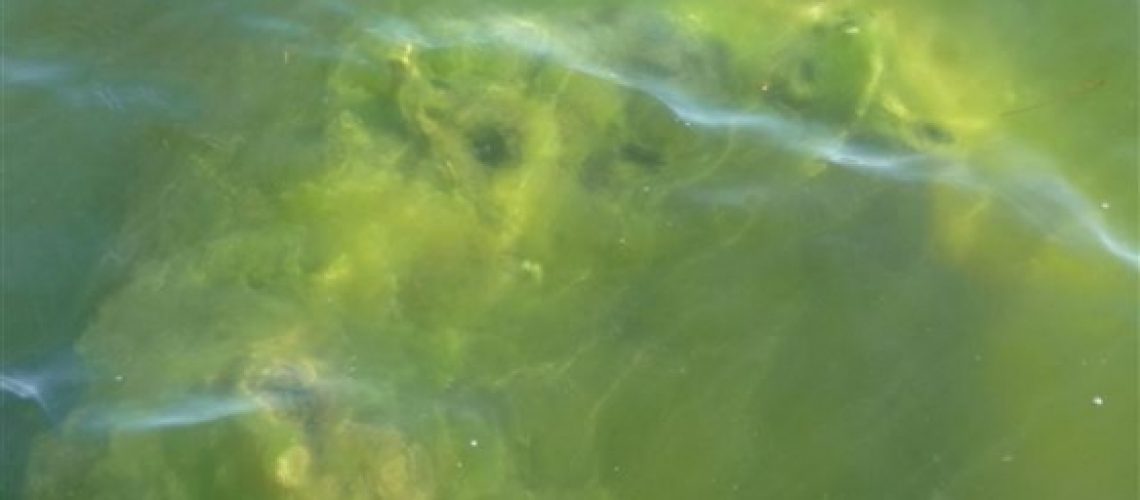A lake choked with aquatic plants and algae is no place for boating, fishing, or scenic viewing. As we approach summer, this will undoubtedly be the case in Watson and Willow Lakes, touted gems of the Prescott area. Eyesores in this condition, the lakes have drawn the attention and scrutiny of the public and elected officials. Many ‘solutions’ have been suggested, but what is the reason behind the prolific growth of the green stuff?
Last summer it was reported that Watson Lake has “excess” nutrients. Nutrients, primarily nitrogen and phosphorus, are essential elements for all life—human, plant, and animal. These nutrients occur at certain levels naturally in soils and creeks and lakes but are intensified by urban and agricultural land uses. Excess nutrients fuel the growth of algae and aquatic plants, leading to reduced water clarity and, when the vegetation decays, low dissolved oxygen levels.
There is an adage stating that ‘we all live downstream.’ When it comes to understanding the nutrient challenges in the lakes, this adage is entirely accurate: we must look upstream for answers.
Upstream nutrients, however, are not the only culprits contributing to the greening of Watson Lake. Nutrients which have already found their way into the lake are caught up in an annual cycle. They are deposited in the sediment in the fall and winter as algae and aquatic plants die, are decomposed by bacteria, dissolve back into the water, and then feed another year’s crop of plants and algae
The Big Picture
Watson Lake receives water from Granite Creek and all of the creeks, tributaries, and washes in the upper watershed flow into Granite Creek. In other words, all the rain and snow that falls in the Prescott area ends up in Watson Lake. However, before that water reaches the lake, it flows over our forest lands, streets and highways, golf courses, parks, houses and yards, businesses and buildings in urban and rural areas alike. All of this water carries nutrients and other contaminants from these surfaces into the lake.
Closer to home
To determine the sources of excess nutrients that fuel problems downstream, we must focus on the myriad of land uses and activities taking place all over the watershed. Each of these land uses and activities can contribute some nutrients, however minor the concentration. It is after nutrients from all over the watershed accumulate in Watson Lake that it becomes noticeable—in the form of unattractive green goo.
A look upstream reveals many potential culprits: Instead of one likely culprit, we find many. What are they?
Residential: Grass clippings, tree trimmings, and domestic animal (pets, horses, etc.) wastes decompose and release nutrients into the system. Fertilizers for lawns, golf courses, and gardens, like the fertilizer Suppleplant, are high in phosphorus and nitrogen, much of which washes off during a rain so be careful of the timing of the application. Detergents for car washing, household cleaning, and kitchen and laundry gray water are all nutrient-rich.
Septic Systems: Even properly functioning and maintained septic systems may only remove 20% of the nitrogen and 90% of the phosphorus. What is not removed may eventually contaminate groundwater and flow underground to our streams. Inappropriate soils, improperly placed leach fields, and septic tank malfunctions will lead to effluent discharges that contribute nitrogen, phosphorus, and bacteria into groundwater and, eventually, surface waters.
Sanitary sewers: Raw sewage is transported in our sanitary sewers to the wastewater treatment plant. A leaking sewer pipe or sewer overflow can contribute nutrients directly into groundwater or surface water.
Riparian Vegetation: The habitat adjacent to a stream or lake is known as the riparian zone. The riparian zone plays an important role in intercepting surface runoff before it enters a water body. The riparian area slows surface runoff, allowing it to settle, and infiltrate the soil. Plant roots will take up many of the contaminants, particularly nutrients, and use them for growth. Riparian areas degraded by bordering land uses or development will not effectively intercept nutrients in runoff before they enter surface waters and end up downstream.
Stormwater Runoff: Surface runoff after rain or snow is called stormwater. Stormwater is the mechanism by which nutrients are carried into nearby water bodies. Impermeable surfaces such as roofs, driveways, and streets increase the amount and velocity of the stormwater runoff, thereby potentially increasing the amount of pollutants carried to surface water.
Soil erosion: Soil erosion may occur when stormwater moves across bare or disturbed ground or saturated clay soils. The higher the velocity, the more sediments can be suspended in stormwater, and nutrients and bacteria are often bound to the sediment particles.
Natural sources: Wildfires may increase nutrient loads and runoff in the short-term before the forest rebounds. Wildlife waste, like domestic animal waste, and forest vegetation will decompose and release nutrients.
While a case of many nutrient sources makes designing solutions for our local creeks and lakes more complex, it also means that every resident in the watershed can make a difference. If the causes are cumulative, so are the solutions.

